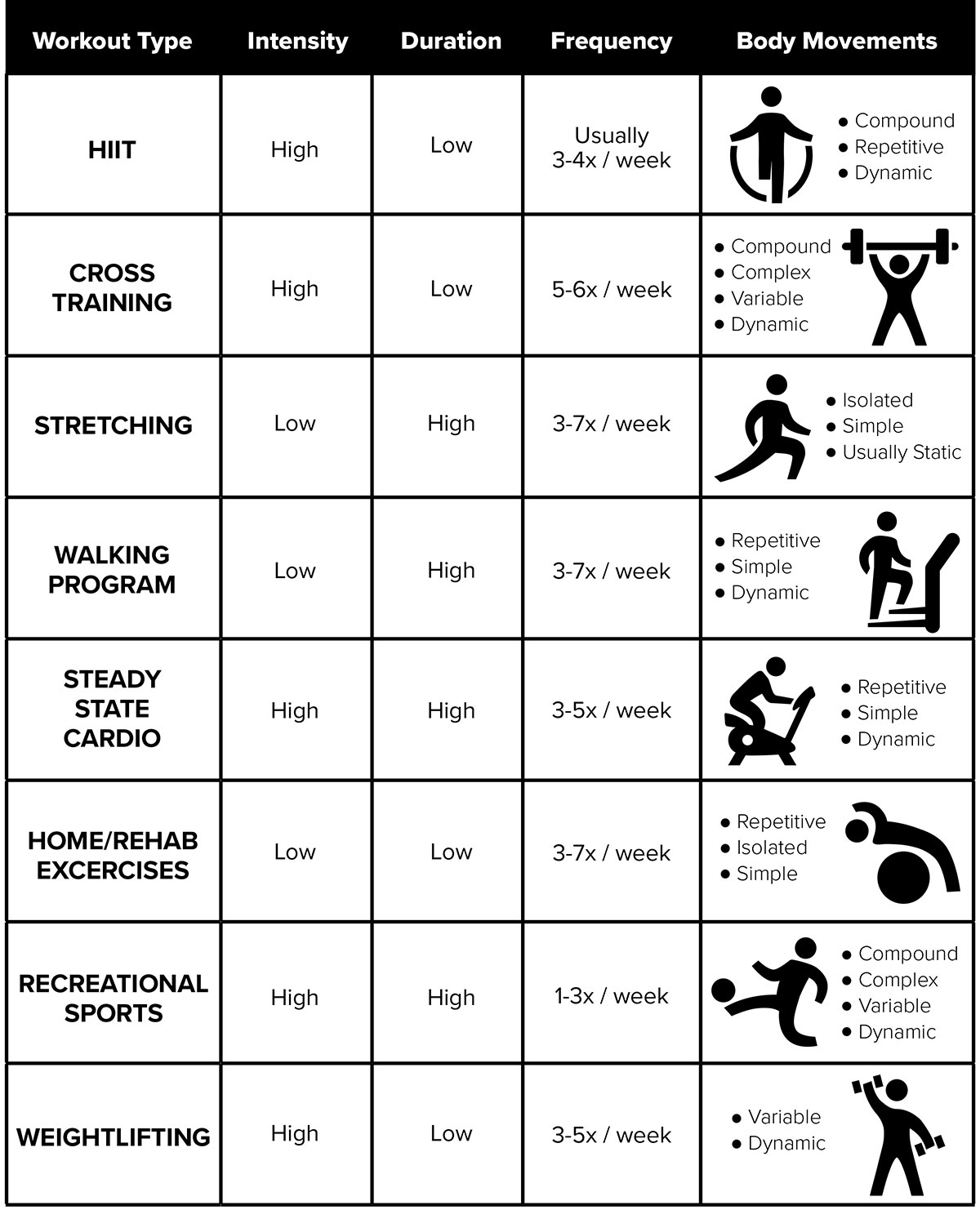
Exercise is an essential component of fitness and well-being. The benefits are varied and many, as are the options when choosing an exercise program that is right for you.
However, the list of exercise programs can be daunting, particularly for a beginner.
Inspiring and empowering people to reach their full potential often includes helping them make decisions on how best to improve and maintain their fitness levels.
Physical and occupational therapists are experts at understanding body movement and function, both normal and abnormal. They are uniquely equipped to help people of all ages and fitness levels to choose exercise programs. Having the thoughtful consideration of a physical or occupational therapist can be helpful as it pertains to your specific fitness goals. Let’s delve into this and equip you with the knowledge needed to create a fitness routine that aligns with your physical goals or objectives.
Exercise can be described based on its intensity, duration and frequency, or the body movements involved (Table 1).
Intensity is a key factor to exercise as it pertains to the effort exerted in a workout. The time component to exercise is mostly determined by intensity, as low-intensity workouts tend to require higher duration to be effective, and high-intensity workouts may only be sustained for a small amount of time.
Intensity may be high or low and can tax two different energy storage systems in the body. In a low-intensity workout, oxygen consumed during the workout is sufficient to supply muscles and tissues, which improves the cardiovascular system and increases endurance. In a high-intensity workout, oxygen supply runs low, and the body must rely on energy from stored sugars, thereby reducing fat stores to lose weight.
Whether your routine consists of high or low intensity workouts, it is very important to seek medical help if you are experiencing strange or painful symptoms while working out. Some of those symptoms can look like dizziness, breathlessness, and severe pain in your muscles and joints.
Frequency is the number of times per day, week or month an exercise program is performed; it should be considered in determining recovery time between workouts.
In general, higher-intensity workouts require greater amounts of rest. As the body ages, it may take longer to recover from workouts and frequency may need to be lowered to 2-3 times/week.
Duration and frequency are important to consider when crafting a sustainable workout plan. Honoring your workout routine on a consistent basis allows for the body to grow stronger and develop a higher endurance. Regardless of one’s fitness goals, a frequent exercise schedule can help your body adapt and respond positively to the demands placed on it. Doing so can also aid in developing healthy habits and thus more success within a sustainable foundation. Consistency is needed to achieve fitness goals and maintain tangible results.
Nutrition and rest also are essential for recovery, with a well-balanced diet of protein, fats and carbohydrates and seven or more hours of sleep recommended 2for optimal performance.
For simplicity, body movements may be described as compound vs. isolated, complex vs. simple, repetitive vs. variable, and dynamic vs. static.
Compound movements involve multiple joints and muscles.
Complex movements usually require conscious planning to perform and significant training to master.
Repetitive movements are performed multiple times in the same way.
Dynamic movements require significant changes in body position when performing the exercise.
Each component greatly affects how an exercise program will help you achieve your goals.

Identifying your goals for exercise and understanding exercise components allows for the safe and accurate selection of the right program. The types of body movements used in different types of workouts can be seen in Table 1.
For example, individuals with limited time to allocate to exercise each week may choose programs that are low in duration and frequency, such as high-intensity interval training (HIIT), recreational sports or weightlifting. HIIT training is safe and very effective. Depending on each person’s unique circumstance, other individuals may opt for programs with low intensity or low frequency that allow for less joint stress and greater recovery time, such as stretching and walking programs. Athletes generally should choose programs that involve compound, complex, variable and dynamic movements to mimic the sports environment.
A recreational sports program may address the goals of fat/weight loss, strengthening and wellness to some degree, while a well-designed home-exercise program from a therapist may target specific muscles to benefit strength and wellness by returning you to optimal level of function. While this list of exercise programs is not comprehensive; it provides the general rules by which a program should be judged and chosen.
Physical activity consists of a plethora of benefits, from fighting off diseases and improving your metabolism to positively impacting your mental health and sleep schedule. Consistent movement is needed to carry out daily activity.
Our bodies are all different – even more reason to integrate the knowledge of a physical therapist. PTs can assess your bodily capabilities and existing health conditions to craft a sustainable exercise plan that can provide sustainable growth over time.
Choosing the best workout can be determined by multiple factors, like your personal goals and existing health conditions. To put together an exercise regimen, it is important to know your body’s needs and capabilities.
Crafting an exercise routine tailored to your goals and needs can feel overwhelming—another great reason to seek the expertise of a physical therapist.
Contrary to popular belief, you don’t need to be injured to benefit from the services of a physical or occupational therapist. When developing a workout plan, a physical therapist can serve as your expert ally, designing a program that aligns with your objectives while considering any health conditions. Their approach goes beyond simply combining exercises—they bring a deep understanding of body mechanics, injury prevention, and overall wellness.
Partnering with a physical therapist ensures that your fitness journey is not only effective but also safe and personalized to your unique goals. With their guidance, navigating your path to better health becomes more manageable and filled with potential for long-term success.
Are you ready to meet your fitness goals but not sure where to start? We have a team of physical therapists that are equipped with the tools and expertise needed to assist you on your fitness journey. We are committed to addressing your current challenges and paving the way to a healthier lifestyle. Request an appointment with us today and begin on the journey towards optimal health.